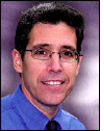Oct 30, 2006Europe has yet to jump on the Electronic Product Code bandwagon the way companies in the United States and, to a lesser extent, Asia have. However, if our RFID Journal LIVE! Europe event last week was any indication, Europe is getting serious about embracing EPC. Attendees were knowledgeable, engaging in discussions with speakers and other attendees, and interested in potential supply-chain and logistics applications.
There are a number of reasons why the mood at this year's event was more focused on the potential of EPC to deliver value. New ultrahigh-frequency interrogators (readers) based on the second generation EPC protocol now work with new, relaxed regulations proposed by the European Telecommunications Standards Institute (ETSI). In a panel discussion I hosted, Christian Plenge, RFID project lead for Metro Group International (MGI), said the performance of ETSI-compliant UHF EPC interrogators was better than expected. "The problem now is not being unable to read tags," he said. "It is reading tags on items that are not on the forklift but on a nearby shelf."
European companies have been reluctant to adopt UHF EPC because the performance of Gen 1 EPC systems under old ETSI rules was not good enough. ETSI has made more bandwidth in the UHF spectrum available for RFID systems, and it has allowed interrogators to emit more power, making it possible to read passive UHF tags from farther away. The UHF Gen 2 protocol was also optimized to work well around the world, not just in the United States. The improved performance of UHF systems means European companies can now read tags at longer range in warehouse and supply-chain operations. Companies are even looking at tagging shipping containers with passive tags.
Another reason European companies are more focused on EPC technology is that there are more examples of companies that have done pilots or actual rollouts using UHF EPC systems that show a clear return on investment. During the conference, a number of speakers talked about the benefits they are seeing. Plenge said Metro could save up to $8 million in Germany just from automating the process of receiving pallets, for instance. Among the other companies that made compelling presentations were TNT Express, a logistics company that is tracking goods from Asia to Europe with RFID; BGN, a large Dutch bookseller tagging every book in one of its stores; and KPN, a Dutch phone company that is applying RFID tags to the packaging of individual mobile phones (the tags are removed at point of sale).
There is still some skepticism in Europe about just how much value the EPCglobal Network will provide. That's true in the United States and Asia, as well. But the concept of the EPCglobal Network—which is really a set of standards for sharing EPC data securely over the Internet—is catching on. I attended a session by Michael Young, senior director of technology for Afilias Global Registration Services, in which he explained the network and how his company is using it to offer discovery services—a means for looking up information about products associated with an EPC.
Not only was the session packed, but also the questions were specific. One person asked about publishing and subscription standards, while another asked about how a user would find information about a product if the owner of that product published information to a different discovery service (the answer: the service is set up as a peer-to-peer network, so one service can query another).
When I spoke with Joe White of Symbol Technologies at the show, he mentioned that Symbol's business in Europe was growing at a nice clip. He said it wasn't just big orders from a few companies, but engagements with a large number of companies, which come from a broad array of industries.
Europe is not going to ramp up overnight—and neither is the United States, though U.S. mandates are driving up the volume of tags purchased to some degree. New technologies require an incubation period. With new Gen 2 UHF equipment, coming standards for HF technology and new standards for sharing EPC data over the network, it's clear that Europe won't be far behind the United States in adoption. In fact, it might not be long before Europe and Asia are leading the global adoption of RFID technologies.
Mark Roberti is the founder and editor of RFID Journal. If you would like to comment on this article, click on the link below.


